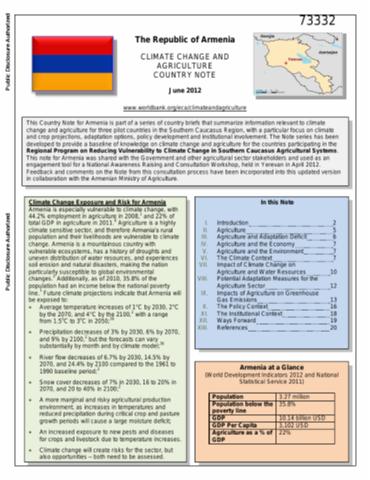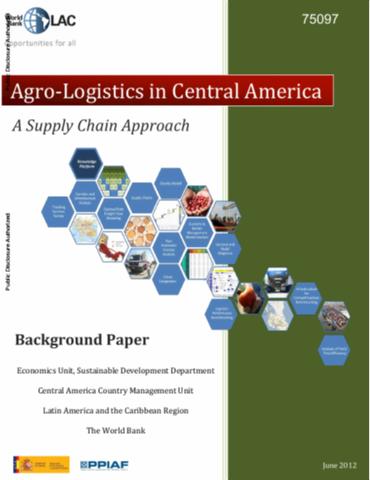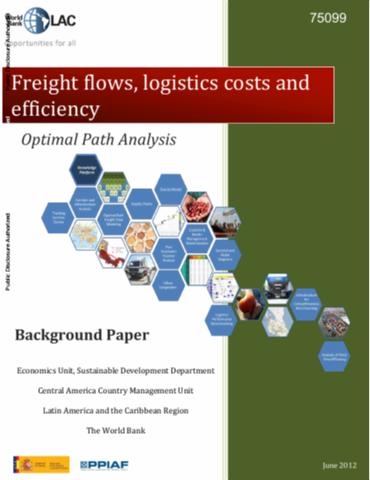The World Bank is a vital source of financial and technical assistance to developing countries around the world. We are not a bank in the ordinary sense but a unique partnership to reduce poverty and support development. The World Bank Group has two ambitious goals: End extreme poverty within a generation and boost shared prosperity.
- To end extreme poverty, the Bank's goal is to decrease the percentage of people living on less than $1.25 a day to no more than 3% by 2030.
- To promote shared prosperity, the goal is to promote income growth of the bottom 40% of the population in each country.
The World Bank Group comprises five institutions managed by their member countries.
The World Bank Group and Land: Working to protect the rights of existing land users and to help secure benefits for smallholder farmers
The World Bank (IBRD and IDA) interacts primarily with governments to increase agricultural productivity, strengthen land tenure policies and improve land governance. More than 90% of the World Bank’s agriculture portfolio focuses on the productivity and access to markets by small holder farmers. Ten percent of our projects focus on the governance of land tenure.
Similarly, investments by the International Finance Corporation (IFC), the World Bank Group’s private sector arm, including those in larger scale enterprises, overwhelmingly support smallholder farmers through improved access to finance, inputs and markets, and as direct suppliers. IFC invests in environmentally and socially sustainable private enterprises in all parts of the value chain (inputs such as irrigation and fertilizers, primary production, processing, transport and storage, traders, and risk management facilities including weather/crop insurance, warehouse financing, etc
For more information, visit the World Bank Group and land and food security (https://www.worldbank.org/en/topic/agriculture/brief/land-and-food-security1
Resources
Displaying 3406 - 3410 of 4907The Republic of Armenia Climate Change and Agriculture Country Note
This country note for Armenia is part of a series of country briefs that summarize information relevant to climate change and agriculture for three pilot countries in the Southern Caucasus Region, with a particular focus on climate and crop projections, adaptation options, policy development and institutional involvement. The note series has been developed to provide a baseline of knowledge on climate change and agriculture for the countries participating in the regional program on reducing vulnerability to climate change in Southern Caucasus Agricultural systems.
Agro-Logistics in Central America
This chapter uses supply chain analysis (SCA) to identify transport and logistics bottlenecks that add costs, times and uncertainty to the exportation of perishable agricultural products from Central America. Macro-level analyses of logistics performance, including the logistics performance index, Doing Business Reports and Enterprise Surveys of the World Bank, as well as the Global Competitiveness Index of the Global Economic Forum, often leave policy-makers unclear on exactly what poor performance means for exporters and producers in Central America.
Freight Flows,Logistics Costs, and Efficiency
In Central America, cargo is transported almost entirely by road. The movement of imports and exports to and from international seaports is done by truck. Rail service is almost nonexistent and air transport serves less than one percent of the cargo generated within the Central American Common Market (SIECA, 2004). Intra-regional trade is much more important in Central America than it might seem at first glance. The second largest trading partner of Central America is the region itself.
Incorporating Green Growth and Sustainable Development Policies into Structural Reform Agendas
This report examines how green growth and sustainable development policies can be incorporated into structural reform agendas. Indeed, as demonstrated in the report, many of these policies are closely linked and synergistic with the framework policies applied by G20 governments in their efforts to pursue strong and sustainable growth.
Incorporating Green Growth and Sustainable Development Policies into Structural Reform Agendas
This report examines how green growth and sustainable development policies can be incorporated into structural reform agendas. Indeed, as demonstrated in the report, many of these policies are closely linked and synergistic with the framework policies applied by G20 governments in their efforts to pursue strong and sustainable growth.









